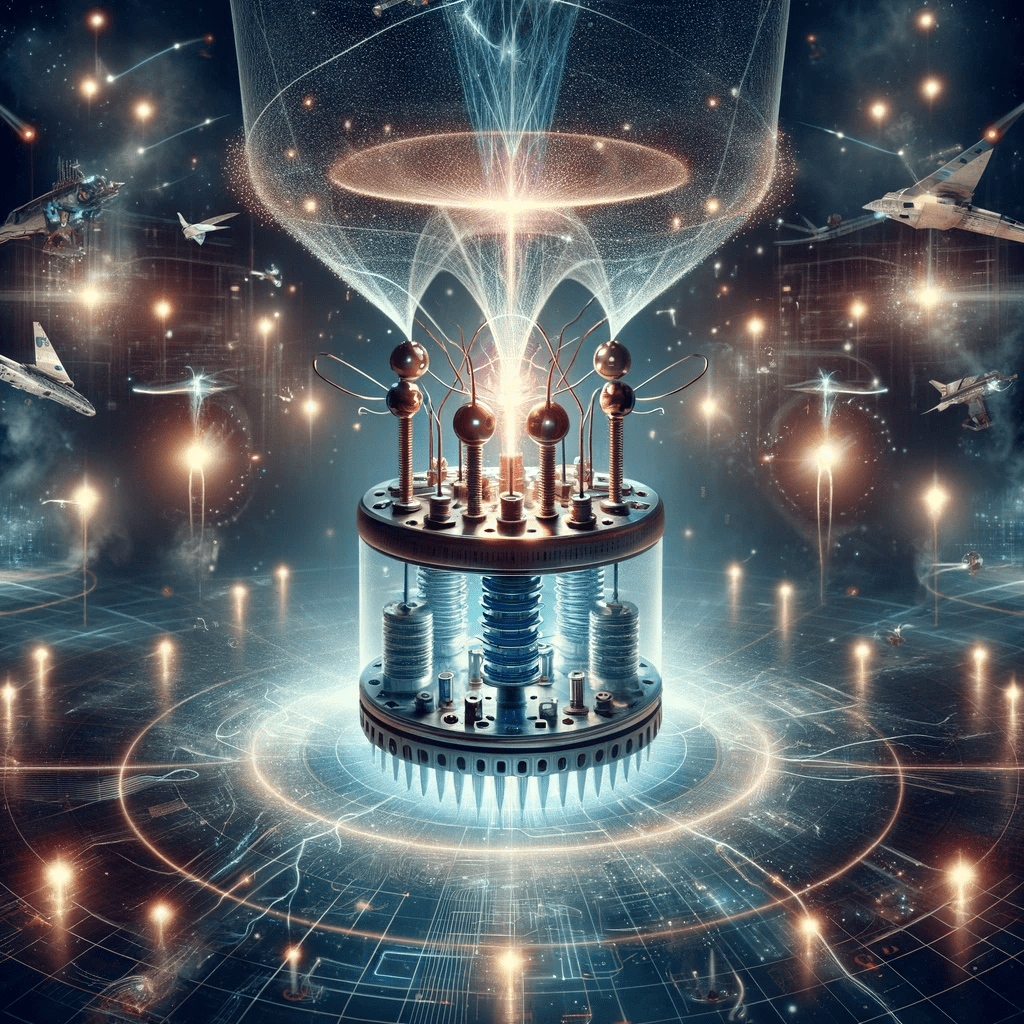Biefeld-Brown Effect

The Biefeld-Brown effect is a phenomenon named after its discoverer, Thomas Townsend Brown, and his mentor, Paul Alfred Biefeld. Brown, an American inventor, conducted experiments in the 1920s to explore the interaction between electricity and gravity. The effect is based on the observation that when a high voltage is applied to a capacitor with asymmetrically shaped electrodes, the capacitor experiences a force in the direction of the smaller electrode. Brown believed this force was a result of a coupling between electromagnetism and gravity, which could potentially be harnessed for propulsion and antigravity applications.
Thomas Townsend Brown was an American physicist and inventor who is best known for his work in the field of electrogravitics, a theoretical propulsion technology that involves the manipulation of the gravitational field using electrical charges. Brown was born in Zanesville, Ohio in 1905 and grew up in a family of inventors and engineers. He graduated from the California Institute of Technology in 1929 with a degree in physics and went on to work for a number of companies and research institutions.
During his career, Brown conducted numerous experiments with high voltage electrostatic charges and discovered that certain materials could produce a gravitational effect when exposed to an electrical charge. He patented several devices based on this principle, including a capacitor that could produce a propulsive force when charged with electricity.
The Biefeld-Brown effect gained some attention in the mid-20th century, with Brown’s experiments sparking interest in the possibility of electrogravitics as a means of advanced propulsion. Brown’s work was primarily conducted in the United States, and the phenomenon was explored further during the 1950s and 1960s, a period marked by intensive research in aerospace and defense technologies.
One fact about the Biefeld-Brown effect is that it is closely related to the concept of electrohydrodynamics (EHD), which deals with the movement of charged particles in a fluid under the influence of electric fields. In Brown’s experiments, the force generated by the asymmetric capacitors was actually caused by ion wind or electrostatic forces, rather than any direct interaction with gravity (source: “Electrohydrodynamics: The Taylor-Melcher Leaky Dielectric Model” by Melcher & Taylor, 1969, published in Annual Review of Fluid Mechanics).
Another interesting fact is that the Biefeld-Brown effect has been the subject of various patents filed by Brown himself, such as US Patent 2,949,550, “Electrokinetic Appararatus,” granted on August 16, 1960. This patent describes an apparatus designed to generate motion through the application of an electric field to a dielectric medium. Brown’s patents demonstrate his persistent efforts to advance and refine the technology based on the Biefeld-Brown effect.
A third fact about the Biefeld-Brown effect is that it has been the subject of numerous conspiracy theories, particularly in relation to alleged “antigravity” propulsion systems used in secret military projects. Some have claimed that this technology has been utilized in black projects or advanced spacecraft, although no credible evidence has been presented to support these claims (source: “The Hunt for Zero Point: Inside the Classified World of Antigravity Technology” by Nick Cook, 2001).
This book explores various antigravity technologies, including the Biefeld-Brown effect, but it does not provide conclusive evidence to support the claims of those who believe in the phenomenon as a means of advanced propulsion.
The New York Times published an article on November 1 , 1955, titled “Anti-Gravity Device Hinted.” The article discussed Thomas Townsend Brown’s work and the potential applications of the Biefeld-Brown effect.
The Biefeld-Brown effect is an interesting phenomenon discovered by Thomas Townsend Brown and Paul Alfred Biefeld in the 1920s. While Brown believed it to be an interaction between electromagnetism and gravity that could be harnessed for propulsion and antigravity applications, mainstream scientific consensus attributes the observed motion to ion wind, electrostatic forces, and corona discharge. Although the phenomenon has captured the imagination of many and has been the subject of patents, books, and media reports.

